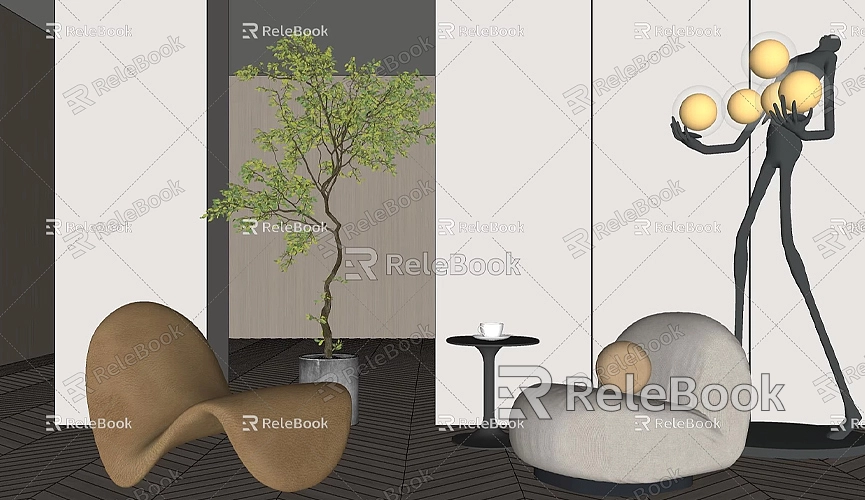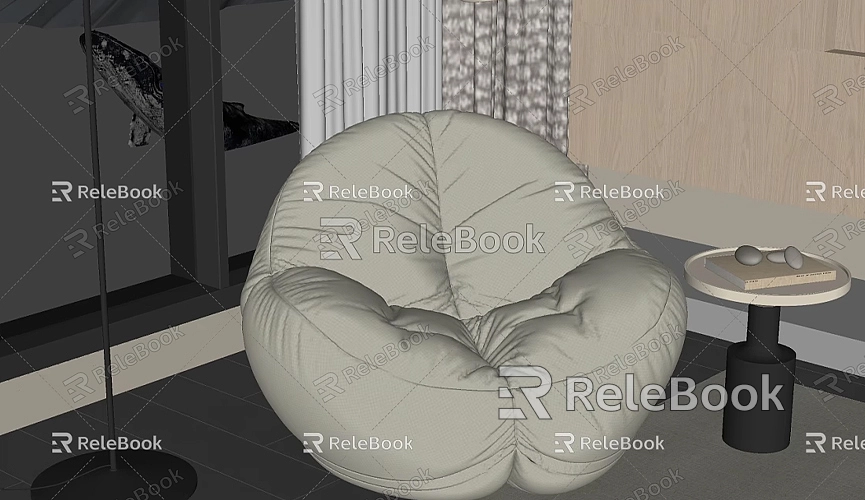How to Combine Two Models in SketchUp
When modeling in SketchUp, you may often need to merge different models together, such as combining architectural structures with furniture models or integrating various design modules into a cohesive scene. Merging multiple models allows you to create more complex designs while saving significant time. This article will explain in detail how to combine two models in SketchUp and share some practical tips to help you work more efficiently.
Preparation Before Merging Models
Before merging two models, there are a few preparations and considerations to keep in mind. First, ensure that the two models are compatible in terms of structure and scale. For instance, if you're combining a building with furniture, the proportions of the building should be able to accommodate the furniture to ensure the merged model makes sense. Second, check the materials and details of both models to avoid duplicate materials or unnecessary lines, which can make the model bulky and negatively impact the final rendering.

To prevent issues during the merging process, it's advisable to save a backup file before starting.
Merging Models Using the "Import" Feature
SketchUp offers a convenient "Import" feature that allows you to add external models to your current design. This is the most basic method for merging two models, and the steps are as follows:
1. Open the first model and prepare to import the second model into this file.
2. In the SketchUp interface, click on the "File" menu, then select "Import."
3. In the dialog box that appears, choose the model file you wish to import. SketchUp supports various formats, such as `.skp`, `.3ds`, `.obj`, etc. Ensure that you select a format compatible with the current model.
4. Once imported, the model will appear in your working scene. You can use the Move, Scale, and Rotate tools to adjust the position and size of the imported model so that it perfectly integrates with the first model.
With this method, you can easily combine different models, whether they are small furniture pieces or large architectural structures.
Using Components for Model Merging
In SketchUp, converting models into "Components" is a highly effective way to manage and merge multiple models. The advantage of components is that they are independent units that can be reused across different design projects, and modifying one instance automatically updates all instances. This saves a lot of time for designers who frequently use the same models.

To convert models into components and merge them, follow these steps:
1. Open the model file you want to merge and select the parts you wish to convert into components.
2. Right-click and select "Make Component." You can name the component and add a description for easy identification during future imports.
3. Save the created component to your component library for easy access later.
4. In another model, use the "Import" function under the "File" menu to bring in the previously saved component. You will find that these components integrate easily into your existing design.
The component management feature helps you effectively avoid duplicate lines and materials during merging and allows for easy adjustments and updates afterward.
Adjusting and Optimizing After Merging
After merging two models, you may encounter minor issues such as overlapping models or lines. At this point, it's important to make appropriate adjustments and optimizations to ensure the final result meets your expectations.
Remove Unnecessary Lines and Faces
When two models are merged, unnecessary lines and faces may sometimes appear, increasing the model's complexity. You can use the "CleanUp" plugin in SketchUp or manually delete these excess elements to improve rendering efficiency.
Adjust Materials and Colors
After merging, you may find that the two models use different materials and colors. In this case, you can use SketchUp's "Materials" tool to unify the appearance of the models, making them visually harmonious. This not only enhances the overall effect of the model but also reduces material duplication, making the model lighter.
Check Model Alignment
Positioning and alignment are crucial when merging models. Use the Move and Rotate tools for fine-tuning to ensure that the models do not appear misaligned visually. For models that require precise alignment, SketchUp's "Snap" feature can help you achieve this easily.
Using Plugins to Enhance Merging Efficiency
While SketchUp's built-in features are quite useful, if you frequently need to merge complex models, you might want to explore some plugins to improve efficiency. For example, the "Skimp" plugin can help simplify models, making large external models lighter upon import. The "CleanUp³" plugin can assist in cleaning up unnecessary faces and lines in the model, optimizing the merged result.
You can find these plugins in SketchUp's Extension Warehouse; selecting the right ones based on your needs can significantly boost your productivity.
Accessing High-Quality 3D Resources
In the process of merging models, you may need additional 3D resources, such as new furniture models, vehicle models, or building materials. Using high-quality 3D resources can enhance the realism and professionalism of your overall design. If you need high-quality 3D textures and HDRIs for creating models and virtual scenes, you can download them for free from [Relebook](https://textures.relebook.com). For exquisite 3D models, you can browse [Relebook](https://3dmodels.relebook.com), which offers a large selection of quality resources. Utilizing these assets can make your designs more visually appealing and better express your design intentions.
Combining two models in SketchUp is not a difficult task; with the right methods, you can easily integrate different elements into a complete design. During the process, using the "Import" feature, components, and various practical plugins can greatly improve efficiency. Additionally, don't forget to optimize the merged models by removing unnecessary elements and adjusting materials and alignments to ensure a flawless final result.
We hope this article helps you master the techniques for merging models in SketchUp, adding more creativity and possibilities to your design work.

